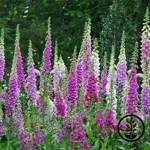FREE: Ruby Grass - 15 seeds

A member of Listia gave this away for free!
Do you want FREE stuff like this?
Listia is 100% Free to use
Over 100,000 items are FREE on Listia
Declutter your home & save money

"Listia is like EBay, except everything is free" - Los Angeles Times

"An Awesome Way To Give And Get Free Stuff" - Michael Arrington, TechCrunch
This Stuff is Free Too:

FREE

FREE

FREE

FREE

FREE
The listing, Ruby Grass - 15 seeds has ended.
Ruby grass, Melinus (=Rhynchelytrum) nerviglumis, is a tender perennial from southern Africa hardy only in zones 9-10, but grown as an annual ornamental in temperate areas. The common name refers to the fluffy pink plumes of flower heads produced in the fall. In Africa its common name is bristle-leaved red top.Ruby grass forms a dense, mounded clump of foliage.This grass small but showy grass has lush blue-green foliage that turns a purple-red in fall. The plants form dense, mounded clumps 8 to 24 inches tall. The wiry, rolled leaves grow in tufts within the clumps.
Ruby grass a good addition to beds and borders.Ruby grass is a good addition to borders, mixed beds and can be used in containers. It combines well with many common annuals, or with other grasses. Use it in groups or singly as a textural contrast with broadleaved plants. Position it near plants with reddish foliage – such as many varieties of coleus – or pink flowers for a color echo once the panicles emerge. It is particularly effective when planted in wide swathes and fits nicely in rock gardens.
Ruby grass (upper right) with Japanese blood grass (L) and silver sage.Plant ruby grass in full sun in any well-drained soil. It is a warm season grass that performs best in hot conditions. Although it is somewhat drought tolerant, it will perform better with consistent moisture. It is easily grown from seed and may reseed in some areas to the point of being invasive. It grows fast enough to use as an annual even in colder climates. It should be started indoors 6-8 weeks before the average last frost in those areas for best results, but can be sown directly in the garden after the last frost. The blue-green foliage of ruby grass stands out against colorful flowers.Clumps can be dug in the fall before the first frost and potted up to overwinter.
Ruby Grass - 15 seeds is in the Home & Garden | Gardening | Gardening Seeds & Bulbs category

